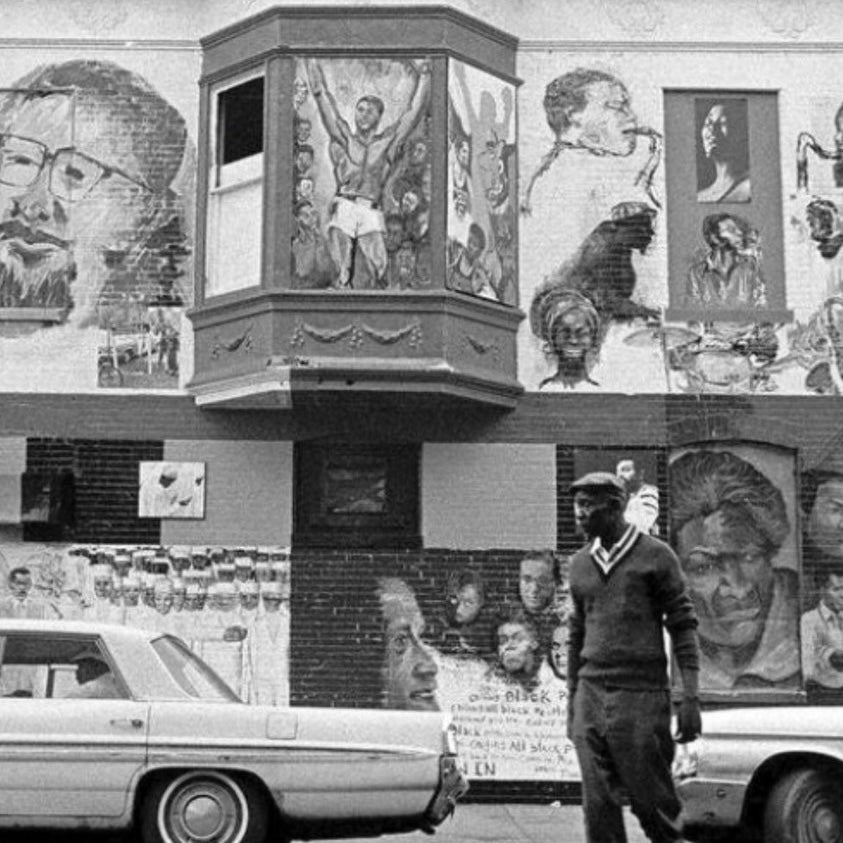Chicago's Legendary "Wall of Respect" Mural

After Cicely Tyson's death, I was searching for representations of her in murals and came across an article about Chicago's Wall of Respect mural, which featured Tyson.
The mural was completed on August 24th, 1967 at 43rd Street and Langley Avenue in the Bronzeville neighborhood. It featured more than 50 prominent Black Americans, including Muhammad Ali, Nina Simone, Harriet Tubman, Miles Davis, W.E.B. Dubois, Aretha Franklin and Malcolm X.
The Wall of Respect may have been the brainchild of seasoned muralist William Walker, but its execution was realized by the Visual Arts Workshop of the newly formed OBAC (Organization for Black American Culture). They planned the mural and engaged the 21 visual artists whose art would adorn the 20x60-foot wall in a building occupied by a bar and a television repair shop. Both businesses gave consent for the mural to go up, but the white absentee owner of the building was not asked.
For the nearly three weeks it took to complete the mural, the locals showed up in increasing numbers, interacting with the artists, giving advice and sometimes criticism. The artists, eager to create something that resonated with the community, were responsive, changing their artwork to reflect the input. The community was so invested in the mural, that they kept watch over it as it went up, fearing vandalism. Rival gangs declared the mural neutral territory and worked with the artists to secure necessary materials. It was truly a community effort.
Because of the popularity of the endeavor and because OBAC was inspired and propelled by the civil rights struggles and emerging Black Power Movement, the project drew the attention of local police, Chicago Mayor Richard J. Daley and the FBI. They weren't too keen on the grassroots-fed mural project because of what it symbolized: a very public means by which Black Americans could finally be seen and assert their collective identity. It wasn't surprising that the mural was destroyed in a suspicious fire in 1971.
The establishment wasn't wrong to feel threatened by the Wall of Respect. It is recognized as the first collective street mural in the U.S. and was the catalyst for a mural movement that swept Chicago and then the entire country. By 1975, more than 1500 murals were painted nationwide that either recycled the work title straight up, or had titles that began Wall of...

